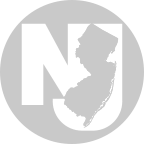Why Emotional Connection is Key to Program Uptake
Katie Fiore, Director, Communication + Engagement Lab
May 15th, 2025
In 2024, the State of New Jersey launched a bold new initiative to address a pressing issue: helping chronically unemployed and underemployed residents gain the skills they need for higher-paying, more sustainable jobs. The program, centered around the concept of “Lifelong Learning Accounts” (LiLAs), was designed to provide financial support for career training, upskilling, and required wraparound services such as transportation, child care, and more. But as the team behind the effort quickly discovered, simply offering a well-intentioned service isn’t enough. To make a real impact, the program needed emotional connection.
At the heart of this challenge was communication. The Office of Innovation, tasked with developing an informational microsite and outreach materials, asked a critical question early in the process: How do we speak to people in a way that resonates, motivates, and ultimately drives action?
From Policy Language to Personal Meaning
The initial approach focused on the technical term “Lifelong Learning Accounts.” It’s a phrase used in government policy circles, and the acronym “LiLA” seemed concise and professional. However, as our team dug deeper, it became clear that this term didn’t land with the intended audience.
For many full-time professionals, programs like healthcare savings accounts or flexible spending accounts are familiar territory. But for part-time, underemployed, or historically underserved individuals - those the program was designed to support - these financial tools were far from intuitive. The phrase “Lifelong Learning Account” assumed a level of understanding and context that many simply didn’t have. Instead of drawing people in, the terminology risked creating distance.
This disconnect wasn’t just semantic, it was strategic. If the audience couldn’t understand the program’s purpose from its name, how could they be expected to engage with it, let alone trust it?
Listening First: The Power of Audience Insight
Before we could name the program, we needed to understand the experiences, motivations and aspirations of the people it was built for. That meant listening, intentionally and directly, to the voices of unemployed and underemployed New Jerseyans. Over five days, we conducted twelve semi-structured, 30-minute virtual interviews with residents aged 18 to 56. Participants represented a mix of genders, races, and ethnicities, with household incomes ranging from under $20,000 to $50,000. These one-on-one conversations gave us space to go deeper than surface-level needs. We heard about their goals, frustrations, and the emotional stakes behind their job searches. They didn’t just want a paycheck - they wanted a path to stability, dignity, and growth.
What emerged was a rich portrait of a resilient and persevering community.
Participants spoke about their vision for their families and their futures. They expressed clarity around what they wanted in a job, and what they wouldn’t accept. Many had walked away from roles that didn’t respect their time, growth, or dignity. And while financial constraints were a shared reality, money wasn’t their primary motivator. They wanted a path to something better, a way to invest in themselves and their futures.
Credentials, particularly certificates, were seen as powerful tools for transformation. They weren’t just pieces of paper, they were door-openers. What people needed wasn’t just “government funding.” They needed to see how this program could help them realize their goals. They needed to feel that this wasn’t just another bureaucratic offer, it was a personal invitation.
A Name That Speaks to Aspiration
Armed with insights from our audience interviews, the team moved into naming exploration. We knew the right name couldn’t just describe the program, it had to connect emotionally and spark action. To validate what would work, we conducted a comparative quantitative test of five potential names: Fund My Future, Skillup NJ, Fund My Skills, LiLA, and My Skills NJ. The test reached 200 people representing the target audience of unemployed and underemployed New Jersey residents, aged 18 to 56, all meeting ALICE (Asset Limited, Income Constrained, Employed) income criteria. With a ±7% margin of error at a 95% confidence level, the results gave us clear, statistically reliable direction.
The standout? Fund My Future.
Simple. Direct. Human. And most importantly, it spoke directly to the dreams and aspirations the audience had shared during interviews. It answered the unspoken question every person asks when presented with a new program: “What’s in it for me?” But it did so with empathy and vision, not transactional language.
The results were striking. Fund My Future outperformed all other options, with 45% of total respondents selecting it as their top choice. It performed even more strongly among historically underserved groups: 58% of people of color, 59% of Hispanic respondents, and 49% of female participants favored the name. It wasn’t just a name, it was a message of hope and empowerment.
But the most powerful signal wasn’t about preference, it was about intent. Among those who selected Fund My Future as their top choice, 65% said they would be likely to apply. That’s not just a branding win, it’s behavior change. It validated our goal of crafting language that doesn’t just inform, but also motivates. In a public program context, that’s everything: a message that resonates emotionally and drives real uptake
This reinforces what behavioral research has long shown: emotional connection drives intent. People don’t just sign up for programs, they sign up for futures they believe in.
Designing for Emotion + Action
This process reinforced a proven marketing strategy: emotional connection transforms awareness into action. If a program wants to engage those it’s designed to help, it must speak to what matters to them - their values and aspirations.
The microsite, press release, and outreach messages were then crafted around this principle. The messaging removed jargon and centered on what matters most to the audience. Instead of leading with policy features, it led with human impact. Instead of explaining how the program works in technical detail, it focused on what participants could do and become through the program.
The team also acknowledged a hard truth: LiLA is complex. At best, people will walk away remembering one key idea. So that idea had to be powerful, emotional, and crystal clear.
The Bigger Picture: What This Means for Government Programs
This experience offers valuable lessons for any government or public-interest initiative:
-
Don’t assume understanding. Technical terms may make sense internally, but they often miss the mark with the public.
-
Lead with emotion, not explanation. People are driven by feelings, visions of their future, and belief in their own potential.
-
Invest in listening. Ground communication strategies in real-world insights from the people you aim to serve.
-
Clarity is necessary, but not sufficient. Emotional resonance turns awareness into action.
-
Action is the real measure. It’s not enough for your approach to be liked, it needs to move your audience to act.
In a world where public trust is fragile and attention is fleeting, programs can’t afford to be overlooked. They need to matter. And to matter, they need to make people feel something.
“Fund My Future” didn’t just rebrand a program, it reframed its entire purpose in the eyes of its audience. It reminded people that their future is worth investing in, and that someone is willing to invest in it with them.
That’s not just good communication, it’s good strategy.
The Office of Innovation Communication + Engagement Lab’s work on Fund My Future was made possible, in part, due to the generous support of the Families and Workers Fund.
 Office of Innovation
Office of Innovation
